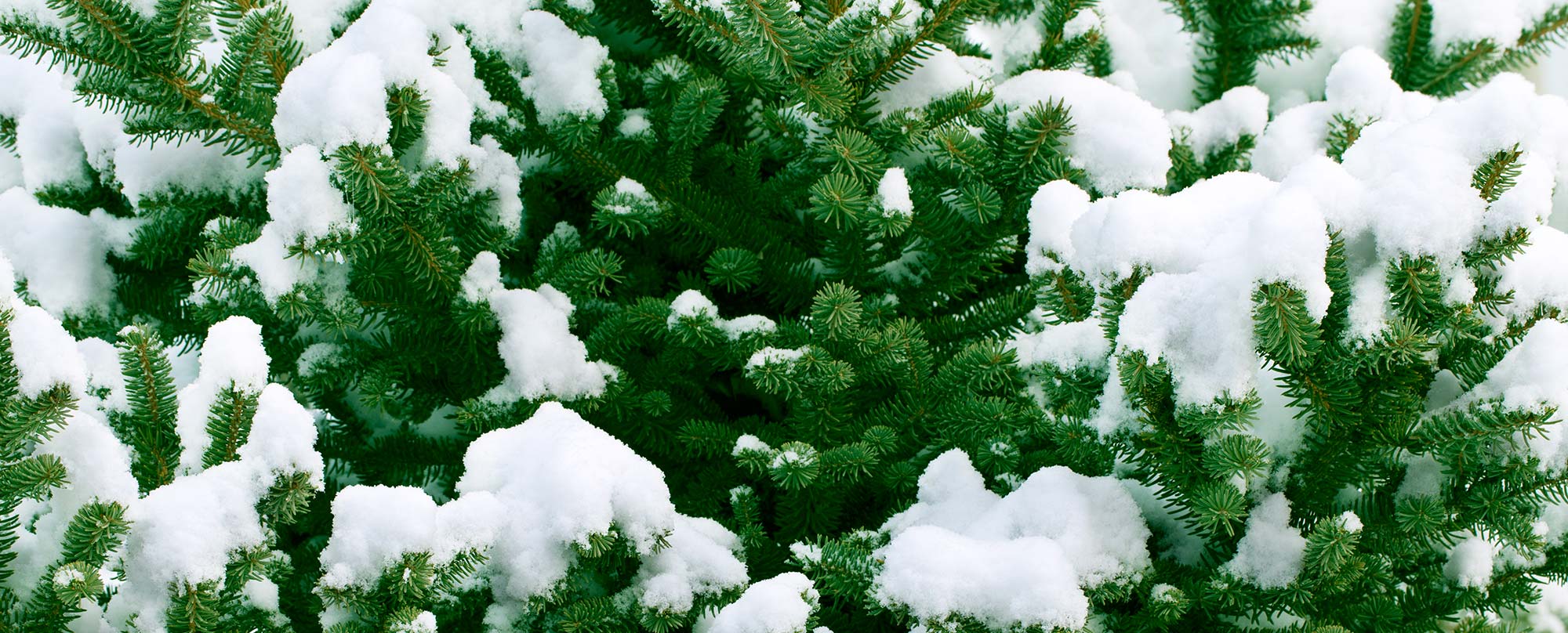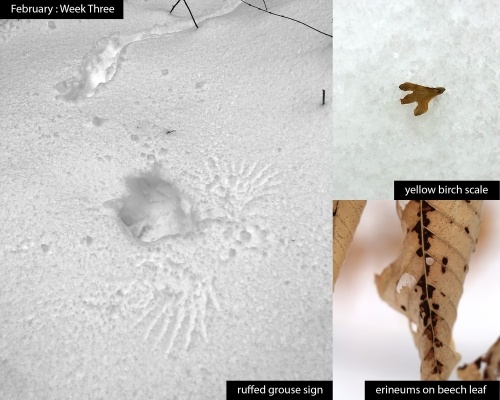This week in the woods, a ruffed grouse burst from its snow roost and startled a snowshoer, who had been inspecting the entry signs a few feet away. The bird left these wing impressions and a glimpse into its temporary shelter. When enough snow covers the ground, ruffed grouse can dive into it, tunnel laterally, and make a small hollow for warmth and shelter. The resulting temporary “grouse house” hides the bird from predators and allows it to take advantage of snow’s natural insulation, conserve body heat, and reduce energy use by nearly half. Air in these shelters can remain as much as 40 degrees warmer than the outside air.
During winter, grouse eat tree buds, twigs, and catkins – sometimes enough in twenty minutes to last the entire day. While they prefer aspens, they often rely on birches, hophornbeam, cherry, and other hardwoods. Because yellow birches’ catkins break apart later and more slowly than paper and gray birches’ catkins do, they can provide vital late winter food; these other birches’ catkins break apart as soon as they ripen in the fall and can get buried by snow, but yellow birches’ catkins can release their seeds atop the snow blanket, where they remain available for foraging. This yellow birch scale – encountered in Fairlee, Vermont – detached from a pollinated female catkin. The lightweight scales (or bracts) contain the tree’s seeds (or nutlets). Their winged structure allows the scales to harness wintry gusts to disperse across the snow. One in one hundred seeds will find a decaying log, boulder crag, or root ball to sprout a new tree from. (For more on yellow birch, one of the most striking and dominant trees in our forests, see Susan Shea’s Outside Story article from 2021.)
The beech erineum mite (Acalitus fagerinea) causes erineums, abnormal growths that show as discolored patches atop American beech leaf and pale raised gall formations below. The microscopic mites feed only on beech trees and likely overwinter in the tree’s bark or buds. In the spring, they will emerge, feed on new leaf growth, and cause cells to develop into light yellow or pink patches of leaf hairs, where they will lay eggs. With full leaf expansion in late summer, the mites can no longer induce gall formation, the erineums dry out, and the next generation of mites migrates back inside the tree. By winter, the erineums (now empty of mites) take on the reddish dark brown of dried blood seen here. Erineums from the beech erineum mite do not harm their host trees. A more regularly banded pattern on beech leaves, however, indicates beech leaf disease, a major threat to American beech.
What have you noticed in the woods this week? Submit a recent photo for possible inclusion in our monthly online Reader Photo Gallery.


